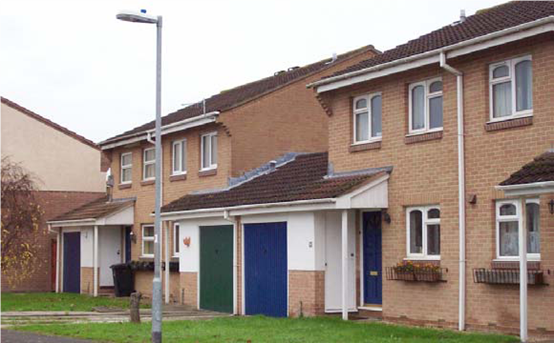- Home Page
- Somerset Profile
- Local Community Network Profiles
- Electoral Division Profiles
- Joint Strategic Needs Assessment
- Census 2021
- Census 2011
- People & Neighbourhoods
- Health and Wellbeing
- Crime & Community Safety
- Economy & Jobs
- Education, Skills and Learning
- Environment
- Housing
- Travel and Access
- SINePost
- Children & Young People
- Older People
- Somerset Maps
- Somerset Geographies
- County Council Election Results
- Contact us
SINePost newsletter - August 2021

In this issue:
- Universal Credit claimants
- Migration estimates
- House price statistics for small areas
- Private rental market summary
- Housebuilding statistics
- School exclusions
- Volunteering statistics
- Local health data
1. Universal Credit claimants
The number of Universal Credit claimants in Somerset has decreased for the fifth consecutive month according to newly released figures for June 2021. The total of 12,905 claimants in Somerset represents a decrease of 1,015 from the previous month although it remains higher than the pre-pandemic figure of 7,370 from March 2020.
National and regional claimant numbers also dropped in the latest month, although the claimant rate in Somerset remains below both the national and regional figures.
For the full dataset, see:
https://www.nomisweb.co.uk/reports/
2. Migration estimates
More people continue to move into Somerset than move out according to latest ‘internal’ migration estimates. In the year to June 2020 an estimated 2,193 more people moved into Somerset from elsewhere in the UK than moved out.
Over the same period, international migration saw the Somerset population increase by 790.
Somerset’s population growth continues to be countered by ‘natural change’, with 1,523 fewer births than deaths in the county in the year to June 2020.
For the full dataset, see: https://www.ons.gov.uk/peoplepopulationandcommunity/populationandmigration/populationestimates/
 3. House price statistics for small areas
3. House price statistics for small areas
The Office for National Statistics has published its latest ‘small area’ data on house prices and sales, covering electoral wards, Lower-layer Super Output Areas (LSOAs) and Middle-layer Super Output Areas (MSOAs):
The figures indicate that in 2020, the median price paid within Somerset’s neighbourhoods (MSOAs) ranged from £150,000 in central Yeovil, to £448,500 in the Pilton, Butleigh and Alhampton area of Mendip. Compared to 2018, the median price paid for residential property increased in 47 neighbourhoods, was unchanged in four, and declined in 20 neighbourhoods.
Overall, there were 7,498 property sales in Somerset during 2020, 1,687 fewer than in the previous year, and representing a fourth successive year-on-year decline.
For the full dataset, see:
 4. Private rental market summary statistics
4. Private rental market summary statistics
The median monthly rent paid for private housing in Somerset was £695 during 2020/21, according to figures published by the Valuation Office Agency (VOA). This was below South West and national median figures of £750 and £730 respectively. Within the South West, median rents ranged from £595 in Plymouth to £1,026 in Bristol.
In terms of property type, median monthly rents in Somerset in 2018/19 were £433 for a ‘room’ (non-self-contained room with shared facilities), £515 for a one-bedroom property, £675 for a two-bedroom property and £820 for a three-bedroom property.
The VOA advise that comparisons with previous years’ statistics may be unreliable due to an inconsistent survey sample, nevertheless, overall results indicate that median monthly rent in Somerset was £45 higher in 2020/21 than in 2019/20. Figures do not include Housing Benefit claimants.
For the full dataset, see:
https://www.ons.gov.uk/releases/privaterentalmarketsummarystatistics
 5. Housebuilding statistics
5. Housebuilding statistics
The number of new permanent dwellings completed in Somerset decreased marginally in 2020/21, according to figures published by the Ministry of Housing, Communities and Local Government (MHCLG).
A total of 1,700 new permanent dwellings were completed during 2020/21, compared to 1,760 dwellings in 2019/20, and a peak of 2,250 dwellings in 2015/16. Of the new homes built in 2020/21, approximately 86% were built through private enterprise, and 14% through housing associations.
A total of 1,810 new permanent dwellings were started in Somerset in 2020/21, representing a very small decline on the 1,880 starts during 2019/20.
For further details, see:
www.gov.uk/government/statistical-data-sets/live-tables-on-house-building (Table 253)
 6. School exclusions
6. School exclusions
There were a total of 66 permanent exclusions of pupils from state-funded primary, secondary and special schools in Somerset during the 2019/20 academic year, according to figures published by the Department for Education. This represented 0.09% of all pupils, which was above the national average rate of 0.06% of pupils.
During 2019/20, there were a total of 4,816 fixed-period exclusions in Somerset state-funded schools, representing a rate of 6.77 per 100 pupils on roll. This was above the national average rate of 3.76.
A total of 7,174 school days were ‘lost’ due to fixed-period exclusions in Somerset during 2019/20, with an average of 3.67 days lost per excluded pupil. Nationally, exclusions were, on average, longer at 4.03 days per pupil.
Exclusions data can be explored interactively at: https://explore-education-statistics.service.gov.uk/find-statistics/permanent-and-fixed-period-exclusions-in-england/
 7. Volunteering statistics
7. Volunteering statistics
An estimated 20% of adults (aged 16 or over) in the South West of England take part in formal volunteering at least once a month, according to the latest annual ‘Community Life’ Survey from the Department for Digital, Culture, Media and Sport (DCMS). This represents a decrease from the previous year’s figure of 28% and is the lowest figure since the survey was introduced in 2013/14.
Formal volunteering is defined as those giving unpaid help through an organisation or club. When looking at all volunteering (formal and informal), 63% of adults in the South West engaged at least once in the last year. Again, this is the lowest figure since the survey has been conducted.
For further details, see: https://www.gov.uk/government/statistics/community-life-survey-202021
 8. Local Health Profile updates
8. Local Health Profile updates
Public Health England (PHE) has published an update to its local health data tool on their interactive ‘Fingertips’ web platform. Data is available at electoral ward, MSOA (Middle-layer Super Output Area), district and county level:
At a Somerset ward level, the tool indicates that life expectancy at birth ranges from 78.5 years (Periton and Woodcombe) to 91.7 years (Bruton) for females, and between 72.7 years (Chard Jocelyn) and 86.5 years (Exmoor) for males.
Data is suppressed for a small number of wards for data quality purposes, e.g., where the confidence interval around the life expectancy value is greater than 20 years.
The interactive tool can be explored here: https://fingertips.phe.org.uk/profile/local-health/
And finally...
- If you have any news or articles you’d like to share
- If any of the links in this newsletter don’t work
- If you would like to subscribe or unsubscribe from the SINePost email alert
Please email AHolly@somerset.gov.uk
 Read our SINePost monthly newsletter
Read our SINePost monthly newsletter
Did you know?
A total of 31,761 Somerset residents in 2011 were born outside the UK, half of which arrived in the last 10 years. 5,287 residents were born in Poland, more than any other country outside the British Isles. - 2011 Census

